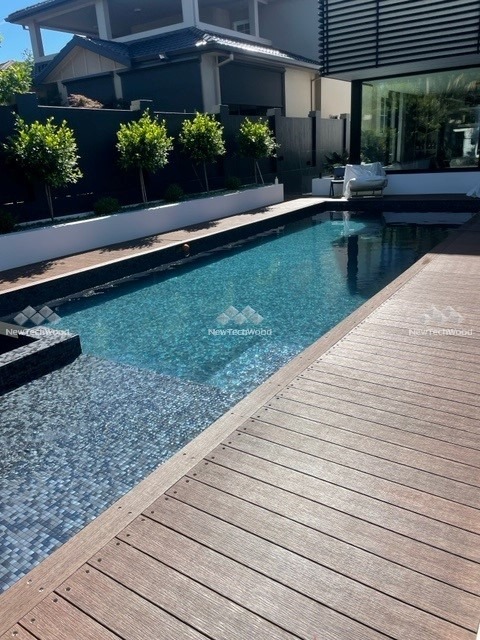News
Advantages of Composite Materials: 4 Reasons Why the Future Looks Bright
Homes of the future will continue to push the boundaries of traditional building methods and materials. It is not just about building “smart” homes, it is about environmentally responsible construction. Here we explore the advantages of composite materials, as well as other eco-friendly options.
Researchers are busy inventing new building materials that can equal or outperform existing raw materials and that don’t involve damaging our planet in the process. Already it has been discovered that hemp can be a low-carbon way to reinforce concrete, for example.
Composite building materials are leading the way and future homes will benefit.
So, what are composite materials? In a nutshell, as defined by the Australian Academy of Science, “Composite materials are formed by combining two or more materials with different properties, …. without dissolving or blending them into each other.” Examples include concrete, mud bricks, and fibreglass.
Here are 4 key advantages of composite materials:
Saving the Planet

Manufacturers need to meet the changed values of today’s customers. We know deforestation is unhealthy for our planet; not only is it impacting the quality of the air we breathe, but it is also leaving our native wildlife homeless and defenceless.
We want less pollution and less use of our natural resources. All environmentally aware manufacturers take these things into consideration with their production.
For example, every year the use of recycled plastic in the manufacture of NewTechWood’s composite decking, cladding and screening products saves over 26,000 tons of plastic from being buried in landfills forever. By using recycled and sustainably sourced timber, no tree is ever cut down to produce NewTechWood either. And yet, we produce a composite that is stronger and more durable than natural timber or plastic alone.
Improve Productivity
Not only is industry actively researching ways to replace the use of raw materials, i.e. timber, as an important step to lower their carbon footprint and reduce any negative impact to our planet, but they are also looking for ways to improve productivity.
With a well-established factory, producing specific building materials becomes easier and more cost effective than hiring labour and equipment to physically go out and destroy forests to obtain the raw product, which then must be transported, manhandled and treated many times before it even makes it to a building site.
Saving $$$’s
Behind every business is someone who aims to make a living from it, so naturally, making money is at the top of the list. 
However, manufacturers need to be competitive to be successful. Technological and scientific advances have made composite products cheaper to produce, which makes replacing raw materials more feasible. This is good news for the manufacturer and good news for you, the customer, as those savings are passed on.
Efficiency
Imagine being able to replace a product that requires termite treatment, then regular sanding back and resealing over its lifetime, with a product that needs none of that and will last as long, if not longer.
We hate to brag, but again, NewTechWood is one such product.
The beauty of many composite products is that they require far less maintenance, and offer greater durability and longevity. It’s one of those areas where a man-made product is actually superior to a natural product. And that is also great news for the planet.
The Future of Composite Materials
Thanks to the significant advantages of composite materials, their future looks bright!
Also, applications of composite materials vary greatly. Aside from building and construction, they are used throughout a range of other industries and applications, including the aeronautical, automobile and marine industries; communication equipment; oil and gas refineries; water treatment facilities; chemical processing plants and more.
Obviously, NewTechWood isn’t the only composite product making a major impact on the future of the building industry.

Some other examples of new composite products include a carbon-fibre reinforced concrete from Germany that means less concrete is needed for building, yet the same level of strength is achieved.
In the U.S. the Massachusetts Institute of Technology have invented a light, mouldable plastic that is twice the strength of steel. Still in its developmental stages, it is hoped to become a structural reinforcement material in the near future.
Again from the U.S. is the development of a cheaper, low-carbon alternative to the steel rebar used in construction today, but using hemp. It is designed to elminate the problem of corrosion and improve the longevity of concrete structures.
Then there is the K-Briq from Scotland, which is produced from 90% construction waste. These bricks are unfired and offer a low-carbon alternative to the bricks we commonly use today.
And if you love potatoes, you’ll love this! From the UK, comes the creation of a product that can replace MDF and chipboard. It is made from potato peelings and does not need or use any toxic chemicals in its manufacture.
And have you ever wondered what becomes of recycled paper when it has become so recycled that it can no longer be used as paper? Well, Honext in Spain did – and have produced a construction board by combining the cellulose fibres from overly recycled paper with special enzymes and water and that can be used for partitioning.
So, now you’re more familiar with the advantages of composite materials, next time you build or renovate a house, chat to your architect about new products on the market that can not only help save the environment but can also save you time and money.
